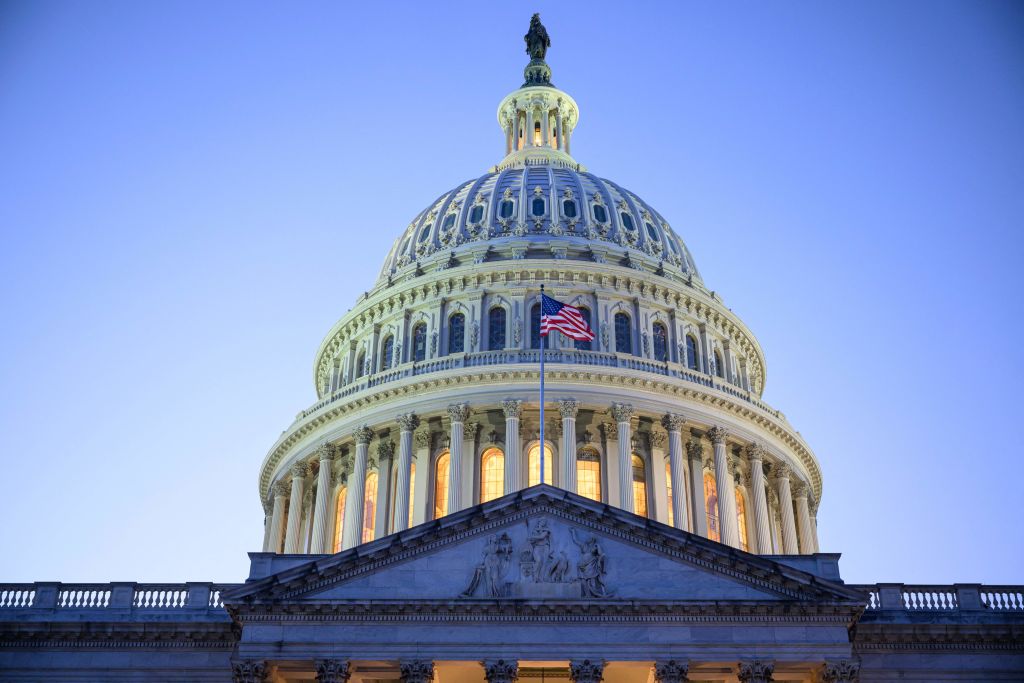House Democrats felt confident they would flip the House in the lead-up to the election. Multiple Democrats told us they’d benefit from the historic incompetence of the House GOP majority and a voter base ready to reject Republicans as too extreme.
That didn’t happen. Republicans are on track to keep the same-sized majority in the next Congress, although this time with President-elect Donald Trump to keep them in line.
However, instead of anger, we’re hearing optimistic House Democrats make the case to us that they had a good cycle. Now, they didn’t have a good cycle, although that is more the fault of the top of the ticket than anything House Democrats did.
If the results continue to play out as expected, House Democrats will be in the minority once again. Freshman Rep. Yadira Caraveo (D-Colo.) conceded Sunday night she’d lost her bid for a second term, another blow to Democratic chances for victory. Rep. David Schweikert (R-Ariz.), a vulnerable GOP incumbent, also won reelection.
But let’s unpack the top Democratic arguments:
— House Democrats overperformed despite a weak showing from Vice President Kamala Harris.
Close enough doesn’t cut it in elections. Yet it’s important to note that in tough swing state races, Democratic candidates outran the top of the ticket. It still wasn’t enough.
Per an analysis flagged to us by Democrats, Frontline Democrats overperformed Harris’ vote margin in their districts by 5%. This is a bigger gap than in 2020 when Frontliners outperformed President Joe Biden by 2%.
In 2024, Red-to-Blue challengers overperformed Vice President Kamala Harris by 1%, while Red-to-Blue candidates underperformed Biden by 4% four years ago.
In both their losing campaigns, incumbent Democratic Reps. Matt Cartwright (Pa.) and Susan Wild (Pa.) ran ahead of Harris and Sen. Bob Casey (D-Pa.) in their districts. Rebecca Cooke and Janelle Stelson also ran ahead of Harris in their unsuccessful challenges to Reps. Derrick Van Orden (R-Wis.) and Scott Perry (R-Pa.).
Harris was decisively defeated as the nation moved right. Despite these negative currents, Democratic House candidates put up a fight.
Of course, GOP House candidates like Rep. Don Bacon (R-Neb.) also outran Trump in a number of key seats.
— A potential GOP majority may be forced to turn to Democrats to keep the lights on.
Assuming Republicans win the House, their best-case vote total is roughly in line with the current margins for the 118th Congress. In that span, Democrats needed to bail out Republicans on every single must-pass bill, such as government funding and debt limit hikes. The House GOP Conference will act differently with Trump in the White House. But as long as the filibuster stays in place or legislation isn’t considered under reconciliation, then compromise will be needed at some point, which is when House Democrats come in.
— House Democrats did better than the last time Trump won.
In 2016, when Trump beat Hillary Clinton, Democrats controlled just 194 seats. This year they’re on track to net around 213-217 seats. This is an interesting data point, but strikes us as comparing apples to oranges in some senses. 2016 and 2024 were quite different election cycles.
Again, we’re not endorsing these takes. In fact, some of them seem like stretches.
The implications of this: No lawmaker that we’ve spoken to in the House Democratic Caucus has their knives out for the New Three leadership team: Hakeem Jeffries, Katherine Clark and Pete Aguilar. The reason why? House Democrats see some rays of sunlight in their defeat.
By and large, the caucus is publicly pleased with Democratic fundraising and how aggressively the three leaders campaigned across the country. Three GOP incumbents were toppled in Jeffries’ home state of New York, for instance.
Democrats will hold their leadership elections on Nov. 19. No drama or challenges are expected.





